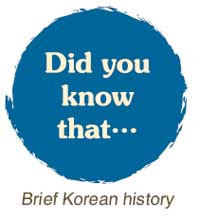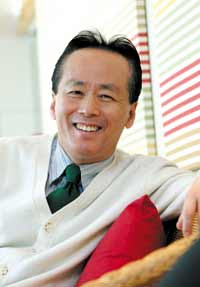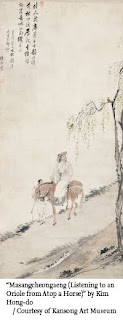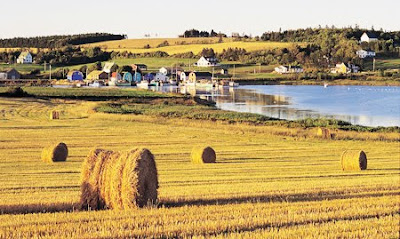
Musang Temple at forefront of globalizing Buddhism
GYERYONG, South Chungcheong Province — There is no better time than fall to visit a Buddhist temple in Korea. Many are nestled in the mountains, providing a refreshing retreat for the body and soul in the midst of gorgeous autumn foliage.
One such retreat is Musang Temple in Gyeryong, a small town near Daejeon, about an hour from Seoul on the high-speed KTX train.
Gyeryong is known for the Gyeryongdae complex, the tri-service headquarters from where all military operations are planned and controlled.
The city of around 40,300 people is also the home of Mt. Gyeryong National Park, considered the mountain with the most “gi” or spiritual energy in the nation. As such, the area houses many Buddhist temples, including the Musang Temple.
The Musang Temple has a unique history and status among the some 2,000 Buddhist temples in the nation.
Currently led by non-Korean monks, it was founded with the purpose to serve as a bridge between Korean Buddhism and the West. It is the only Buddhist temple in the nation where both the positions of the spiritual leader and the abbot are filled by foreign monks.
In just over a decade, the temple has firmly established itself as one of the most prominent international Zen centers in the country, hosting a community of foreign monks, nuns and laypeople who practice Zen following the teachings of the late Great Zen Master Seung Sahn (1927-2004).
His spirit is still very much alive at Musang Temple, according to Ven. Dae Bong, one of the most respected Dharma heirs of Ven. Seung Sahn and the temple’s spiritual leader since its founding in 2000.
Ven. Dae Bong recently came back from a visit to South Africa, carrying on a tradition of missionary work pioneered by his teacher by opening additional Korean Zen centers in Cape Town.
“I was really impressed by how many people were interested,” the 63-year-old monk said during a recent interview with The Korea Times.

The continued growth of Korean Buddhism institutions outside Korea is a testament of the widening influence of the religion that has a history of more than 1,700 years.
What are the reasons for the surge of interest in Buddhism in foreign countries?
“In the West, many people are interested in meditation. Many people in the West are now quite aware of the benefits of meditation. And the tradition that has the most experience with mediation is Buddhism,” Ven. Dae Bong explained. “Buddhism can teach meditation, not dependent on belief.”
Another reason is that more people are interested in learning about the spiritual message of Buddhism.
“By that, I mean the ability to really see this life clearly. This could help you improve your personal relationships with others, the way you live in the world, your relationship to nature,” he said.
The American Zen master has practiced with other foreign monks at the Musang Temple and has taught with the temple’s abbot Ven. Dae Jin, another prominent American student of Ven. Seung Sahn.
Together they have led various projects at the temple, which has produced and continues to nurture devoted Zen masters who often go back to their native countries to lead Korean Zen centers.
Ven. Dae Bong came to Korea in 1984, after studying and working extensively with Ven. Seung Sahn in the U.S.
Ven. Seung Sahn captured the Western Zen followers with the famous “don’t know mind” philosophy, which basically urges people to detach themselves from holding onto any kind of idea, which is the root of human suffering.
Ven. Dae Bong’s impassioned speech and a generous spirit are reminiscent of Ven. Seung Sahn, whose teachings, despite being delivered in broken English, had a resounding impact on inquiring Western minds of Dharma and Buddha’s teachings.
“It was an incredible treasure to meet him and practice with him. Even when he was sick, he was always so amazing. He turned everything into some teaching, but it was never self-conscious,” Ven. Dae Bong said of his teacher.

Pioneering monk
Ven. Seung Sahn is a towering figure in the history of Korean Buddhism who disseminated Korean Zen to the Western world in the 1980s-90s by establishing more than 120 temples and Zen centers in around 30 countries.
His pioneering efforts laid the foundation for the “globalization of Korean Buddhism,” which has emerged as one of the major policies of the Jogye Order of Korean Buddhism.
Because he spent so much time abroad, he is relatively unknown in Korea. His final achievement was the establishment of Musang Temple.
“(To honor his legacy), we’ve continued holding a conference ‘The Whole World is a Single Flower’ every three years,” he said. This year, it will be in India in November, with a delegation from Musang Temple and Hwagye Temple, where Ven. Seung Sahn had served as spiritual leader until his death in 2004.
Like all Korean Zen temples, Musang Temple hosts two or three-month intensive meditation retreats called ‘kyol che’ a year during the summer and winter. Kyol che is a time when one can completely devote oneself to meditation away from worldly distractions.
At other times of the year, the temple organizes short weekend retreats and holds a English Zen meditation class every Saturday.
“For young people, I’d suggest they go to the temples and connect with the monks and nuns there and some practicing friends. Buddha’s teachings are alive so they come through live people.”
For more information, visit www.musangsa.org.
Who is Ven. Dae Bong
Ven. Dae Bong was born in 1950 in Philadelphia, U.S. After studying psychology in university, he worked for five years as a psychological counselor in a hospital and as a welder in a Naval shipyard.

He first met Grand Zen Master Seung Sahn in 1977 at a lecture at the New Haven Zen Center. That time someone asked the Master, “What is crazy and what is not crazy?” The Zen Master replied “If you are very attached to something, you are very crazy. If you are a little attached to something, you are a little crazy. If you are not attached to anything, you are not crazy.”
Ven. Dae Bong thought that answer was better than anything he had learned in University or while working, and realized he had found his teacher. After that he began living and practicing full time with Zen Master Seung Sahn at different Zen Centers around the world.
Ven. Dae Bong has been the abbot of Zen Centers in Paris, France and Berkeley and Cambridge in America. He has practiced and taught in America, Europe and Asia, and since 1999 has been the resident Zen Master of Gye Ryong San International Zen Center in Musang Temple. He became a monk in 1984.
He received Inka from Zen Master Seung Sahn in 1992 and Dharma Transmission in 1999.
Beginners' guide to Zen
City people tend to hold the misconception that Buddhist temples are not readily accessible, since many are situated in the mountains. But there are facilities that offer Dharma classes and platforms for Zen practice in town as well.
A good example is the International Zen Center in Yangcheon-gu, western Seoul, which opened in November 2010 to cater to a growing number of Buddhist followers and Zen practitioners.
English Dharma classes are available every Saturday at 7 p.m. It also has a temple stay program and classes on temple food, which is gaining immense popularity among healthy eaters here and abroad. For more information, call 02-2650-2200 or visit www.seoncenter.or.kr.
For the YouTube generation, watching videos of Dharma talks on the global video-sharing website is helpful as well.
There are many videos by prominent foreign monks of Korean Buddhism like Ven. Dae Jin, Ven. Hyon Gak, Ven. Chong An and Ven. Wu Bong, all of whom are students of the late Grand Zen Master Seung Sahn. They relate to everyday life and are given in simple language.Videos of Great Zen Master Seung Sahn are available as well.
English Dharma talks are held on a monthly basis by the International Dharma Instructors’ Association (IDIA) at the Templestay Information Center in Jongno, central Seoul. Its next Dharma session will be led by Ven. Dae Bong of the Musang Temple on Nov. 5.
After the talk, one can visit the Buddhism bookstore in the basement of the building and check out temple stay brochures on the first floor of the center.



































